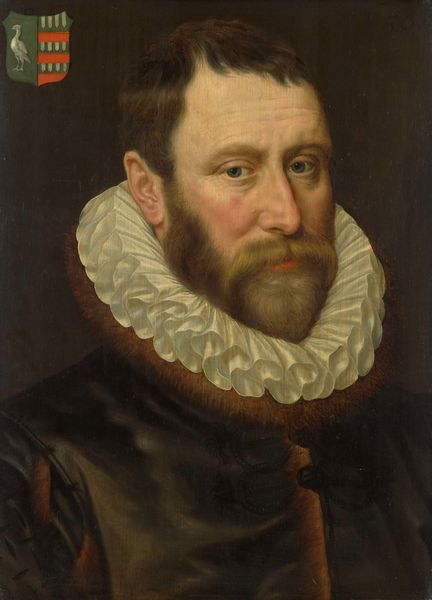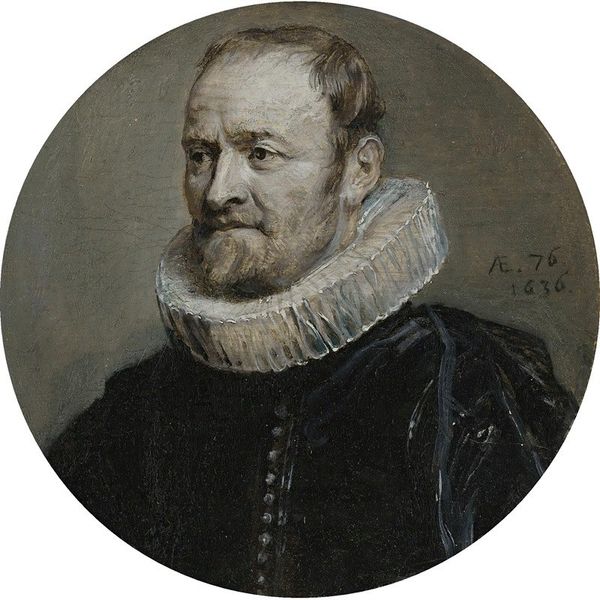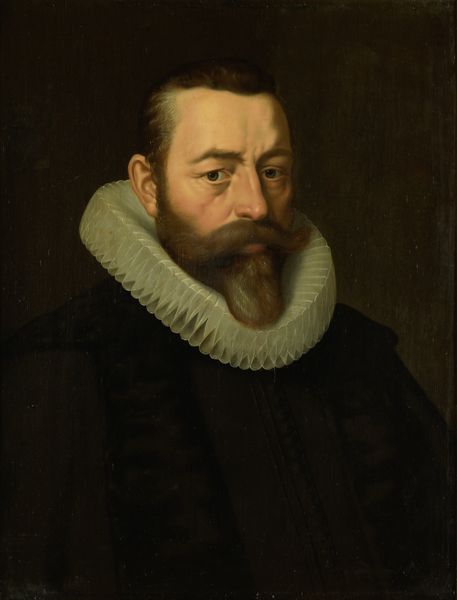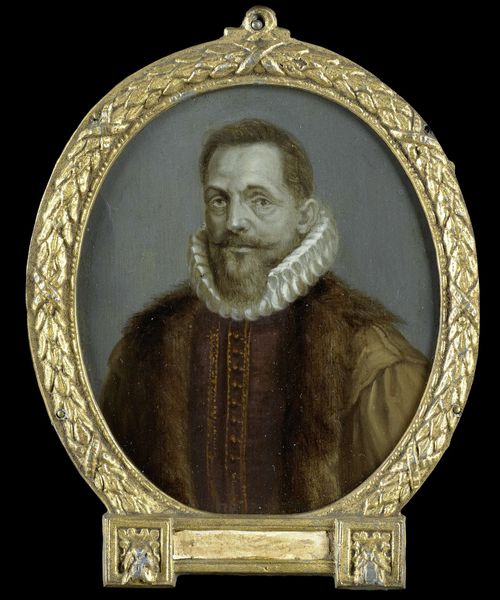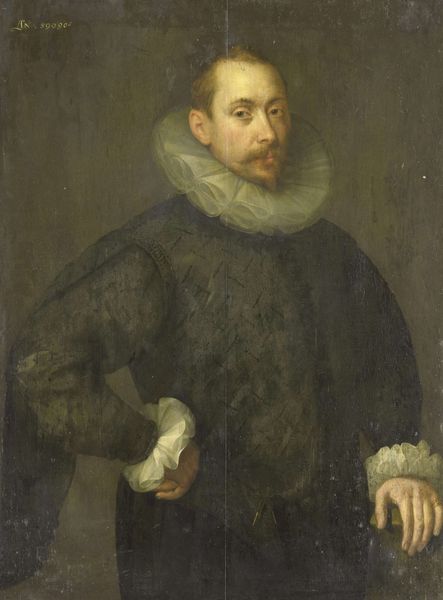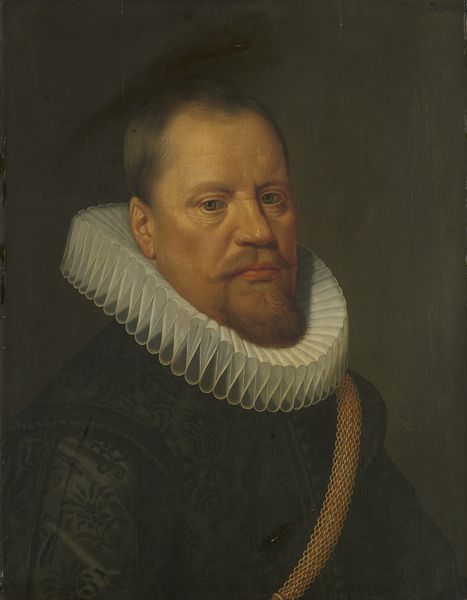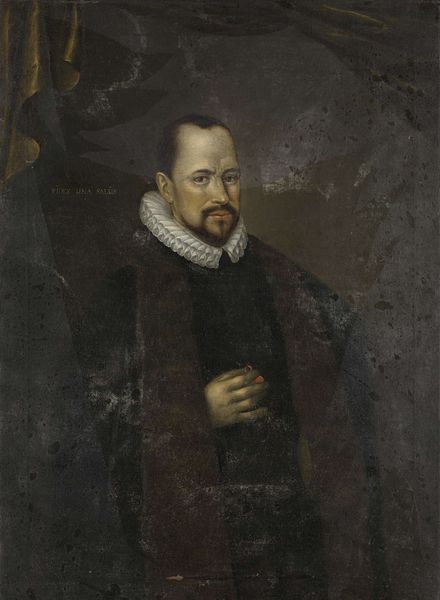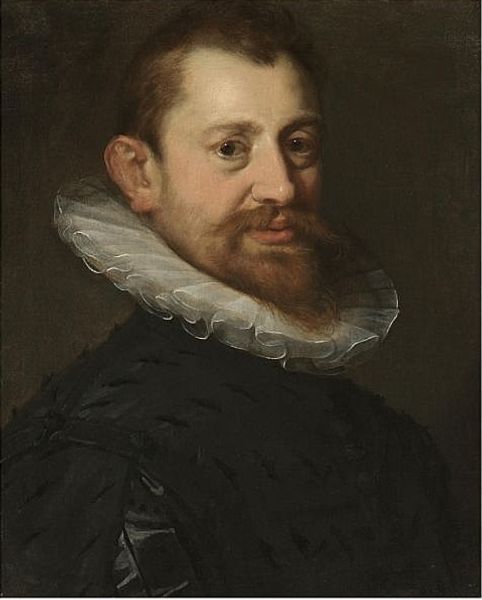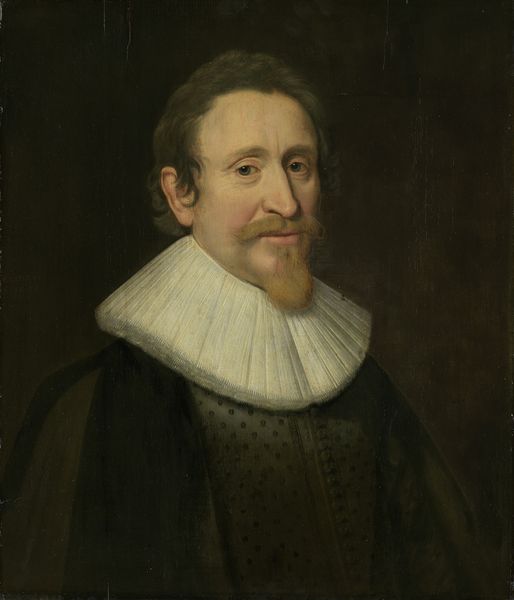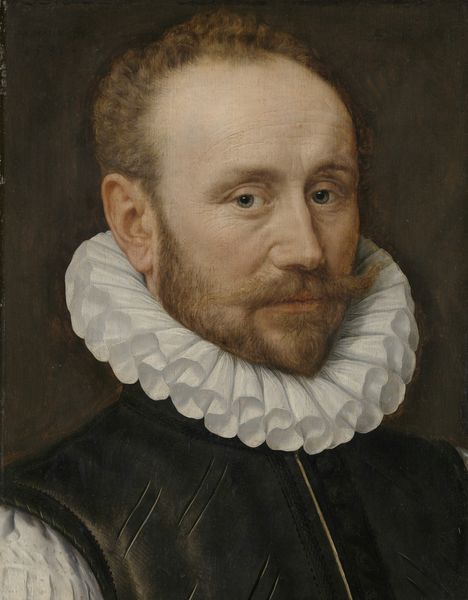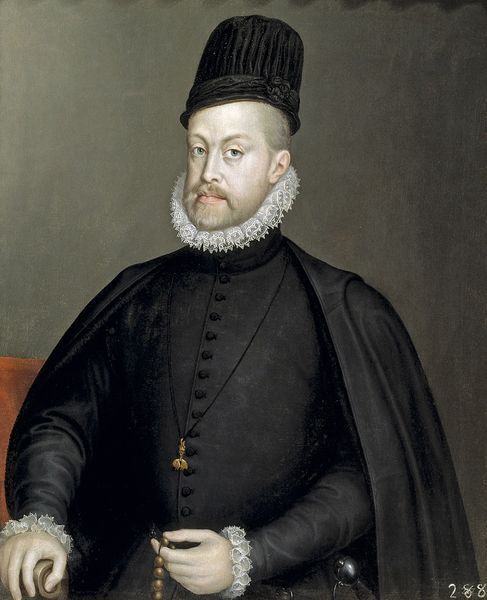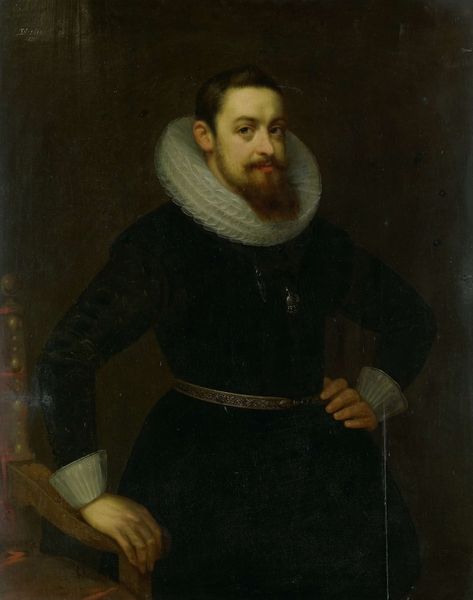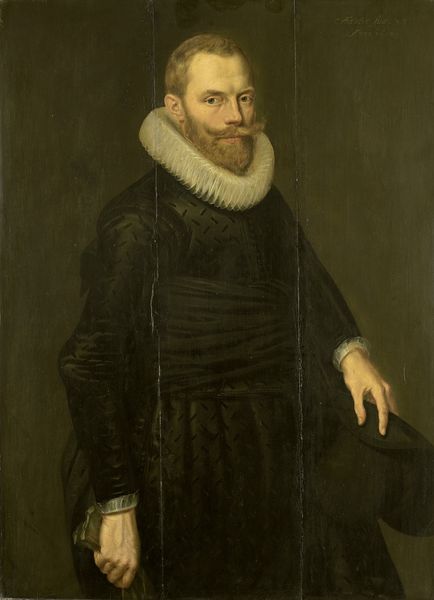
painting, oil-paint
#
portrait
#
painting
#
oil-paint
#
11_renaissance
#
genre-painting
#
northern-renaissance
#
academic-art
Dimensions: height 45.1 cm, width 33.4 cm, thickness 1.4 cm, depth 6.2 cm
Copyright: Rijks Museum: Open Domain
Curator: Standing before us is a portrait that offers a glimpse into the life of Guilliam Courten, husband of Margarita Cassier. It’s a painting dated 1575, rendered in oil. What strikes you immediately about this Northern Renaissance piece? Editor: He looks…serious. Intensely serious. It’s in the eyes, a directness that feels both challenging and a little melancholic. And that crisp white ruff against the dark clothing - stark contrast. It creates a tiny dance right at his throat, drawing attention to the most vulnerable part. Curator: Absolutely. These portraits served multifaceted purposes. On one hand, to memorialize a person, in this case, Courten, solidifying his status. It represents identity and class, with careful consideration of attire and expression as powerful symbols. Editor: Symbols like…power dressing of the era? That black doublet looks expensive. Like the equivalent of a Saville Row suit today. Is he deliberately presenting a particular image? He knows we are watching him. Curator: Precisely. Consider how sumptuary laws of the time dictated what people of various social standings could wear. Also, by understanding more about who he was, his class, it helps in analyzing how he presents himself within the constraints of 16th century expectations of masculinity. It's social commentary. Editor: Mmm, social constraints and all that, but still...he’s rockin' that look. The initials "WCH" emblazoned on the painting’s right… who knew that minimalism started so early? He owns it with the way he carries himself. Perhaps the dark painting adds to this dark seriousness, Curator: That's where the historical narrative becomes even more enriching. Portraits often told coded tales—political alliance, economic ascendancy or religious alignment. The somber backdrop might simply have been conventional or speak towards a degree of puritanical aesthetic. We do see it here in terms of simplicity. The artist presents a somber seriousness in capturing not only the subject's features but conveying a particular disposition. Editor: Well, disposition and history lesson aside, it’s amazing to me that so many centuries separate us from him, and yet that serious look on his face feels utterly present, utterly knowable. I think I felt it as much as studied it. Curator: Yes. Looking closely, with these intersectional perspectives in mind, is more than studying aesthetics, it's understanding the dialogue between history and now. The lasting and continuous narrative on representation in art and society, its evolution and constant interplay, leaves more than one kind of imprint.
Comments
No comments
Be the first to comment and join the conversation on the ultimate creative platform.
